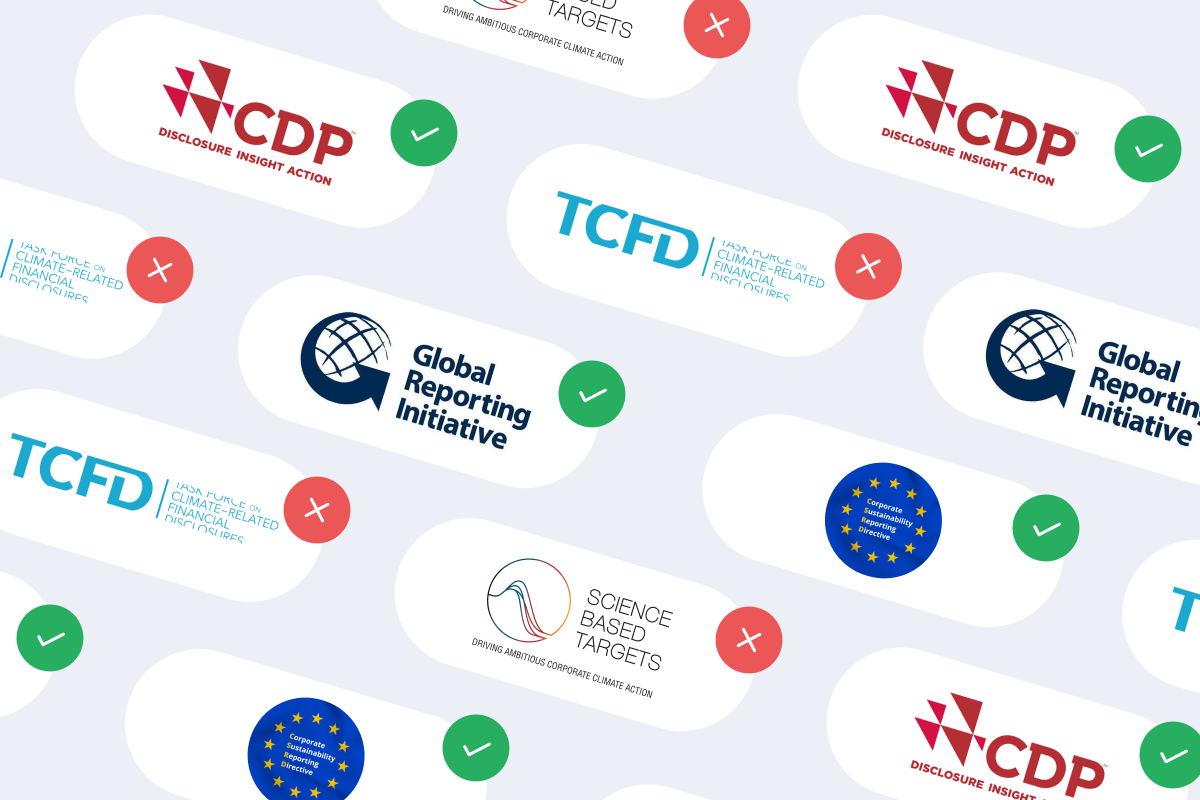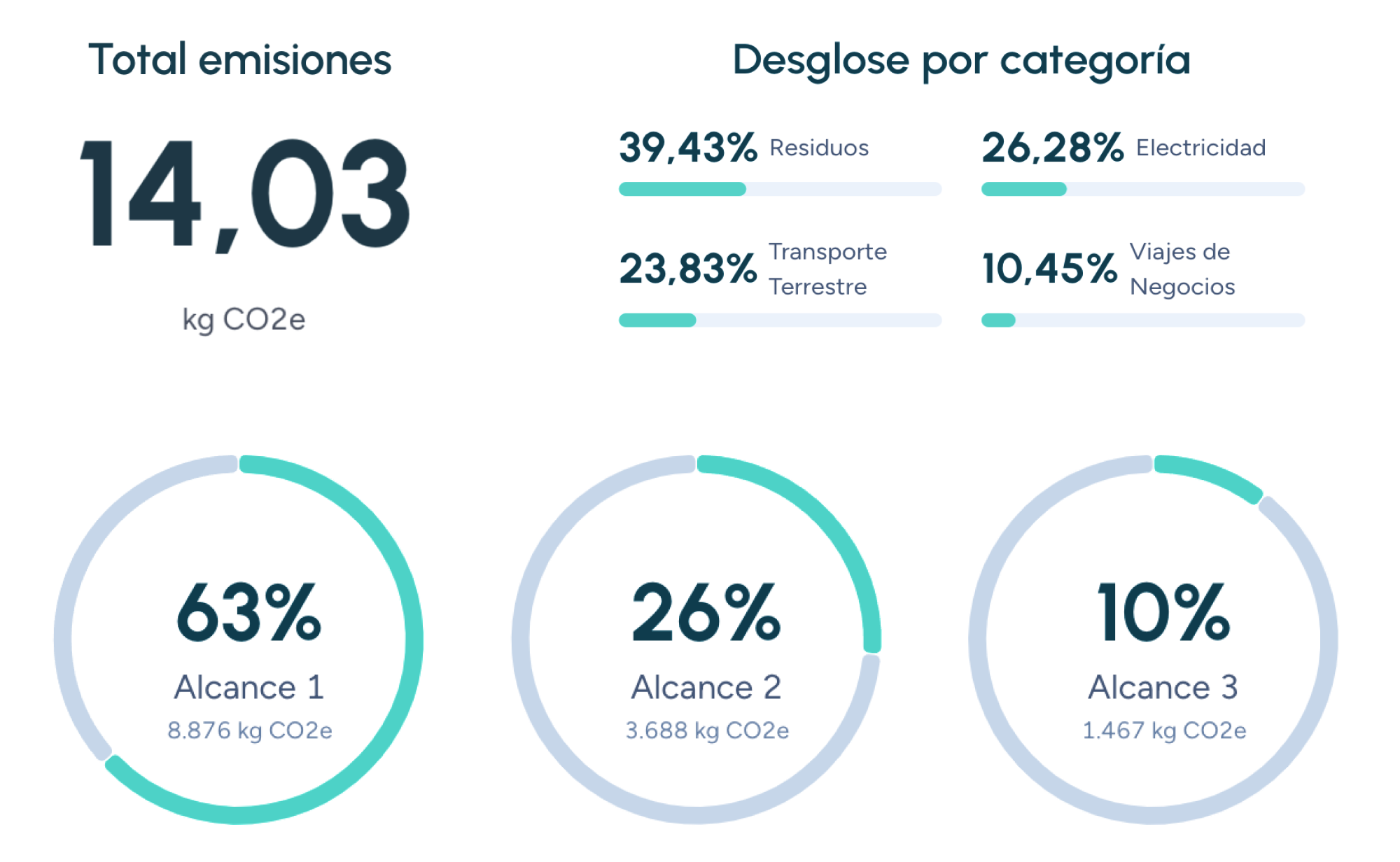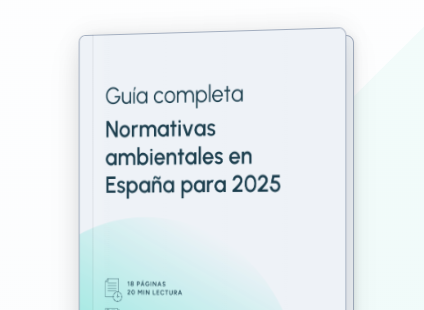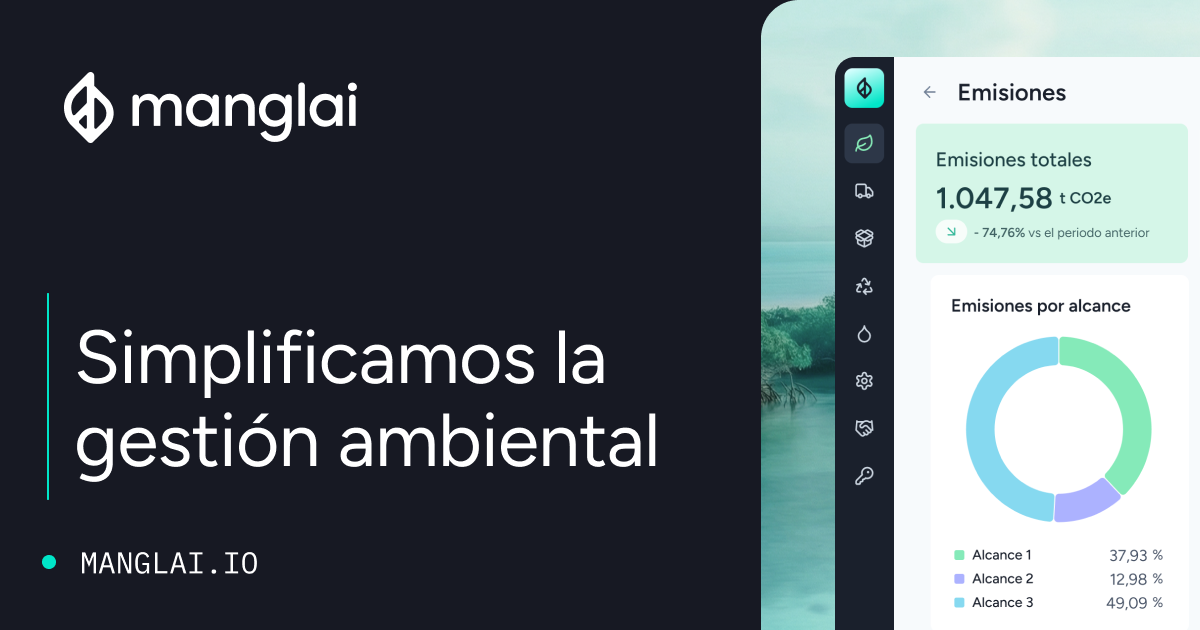Back to the blog
Corporate sustainability
Implementing the GLEC Framework in Logistics: Emissions Calculation and Fleet Optimization
Paula Otero
Environmental and Sustainability Consultant
Transport and logistics account for nearly one-third of global greenhouse gas (GHG) emissions. This impact makes the sector a critical pillar in any decarbonization strategy. However, pressure comes not only from environmental regulations—manufacturers, retailers, and global operators are increasingly demanding verifiable emissions data from their logistics providers.
In this context, the GLEC Framework (Global Logistics Emissions Council Framework) has become the international benchmark. It is the common language for measuring and communicating transport and logistics emissions, allowing shippers and carriers to use a shared methodology and compare results transparently.
Below, we explain how to implement the GLEC Framework in logistics, calculate emissions, and optimize fleets.
What is the GLEC Framework and why is it the global standard in the logistics sector?
The GLEC Framework was developed by Smart Freight Centre (SFC) in collaboration with leading logistics companies, international organizations, and environmental consultancies. Its goal is to harmonize emissions calculation methods across all transport modes: road, maritime, air, rail, and inland waterways.
Before GLEC, companies used different criteria to measure emissions, making it impossible to aggregate or compare results across international supply chains.
GLEC solved this fragmentation by creating a single methodological framework that defines:
- What data should be collected (activity, fuel, distance, and load).
- Which emission factors should be applied and how.
- How to report results in a traceable and verifiable way.
Thanks to this harmonization, companies can now consolidate emissions data from different carriers without inconsistencies. This enables international shippers to have a complete and reliable logistics emissions inventory comparable to their energy or industrial data.
How does the GLEC Framework relate to the GHG Protocol and ISO 14083?
The GHG Protocol is the most widely used framework for corporate emissions accounting. Its Scope 3, Category 4 (“upstream transport and distribution”) and Category 9 (“downstream transport and distribution”) cover emissions from logistics providers.
The GLEC Framework translates these principles into a sector-specific operational methodology for transport and logistics. As such, it has been recognized by the GHG Protocol itself as the logistics sector standard.
Moreover, in 2023, ISO 14083 officially consolidated the GLEC approach, establishing the requirements for calculating and reporting transport and logistics emissions. Therefore, companies that already apply the GLEC Framework naturally comply with ISO 14083 and align with European ESG frameworks, including the EU Taxonomy and CSRD requirements.
How does emission calculation work under the GLEC Framework?
At the heart of the GLEC Framework lies a simple but powerful formula:
Emissions = Activity Data × Emission Factor
This relationship allows emissions to be calculated for any logistics operation—from last-mile deliveries to multimodal chains combining truck, ship, and train.
Activity data as the basis of the calculation
Activity data are the physical indicators that represent the magnitude of the logistics service provided, expressed in fuel liters consumed, kilometers traveled, or ton-kilometers (tkm) transported.
For example, if a company moves 20,000 tons of goods over 500 km, it generates 10 million ton-kilometers of activity. Multiplying this by a given emission factor yields the associated CO₂ equivalent.
The more accurate the data, the more reliable the result. The GLEC Framework distinguishes between directly measured data (highest accuracy), modeled data (average-based estimates), and default values (standard factors published by SFC or the European Environment Agency).
Emission factors: Converting data into CO₂e
An emission factor represents the amount of CO₂ equivalent emitted per unit of activity and depends on variables such as fuel type, vehicle efficiency, load rate, or energy source (e.g., national electricity mix).
A simple example:
- Each liter of diesel emits approximately 2.68 kg of CO₂e.
- If a truck fleet consumes 100,000 liters per month, total emissions would be 268,000 kg of CO₂e, equivalent to the annual emissions of over 30 European households.
The GLEC Framework provides a comprehensive guide to emission factors for every transport mode, updated regularly based on the most reliable international databases (IEA, DEFRA, and EEA).
Examples of GLEC Framework application by transport mode
Road transport
GLEC considers vehicle type, Euro category, fuel, and payload.
For instance, an urban delivery company using Euro VI diesel trucks can calculate emissions by multiplying actual fuel use by the relevant emission factor. Consuming 50,000 liters per month would produce around 134,000 kg of CO₂e.
By optimizing routes and reducing empty runs, the company could cut emissions by 15% annually, showing continuous improvement in ESG reports.
Maritime transport
The calculation is based on fuel oil consumption, distance traveled, and cargo capacity.
Example: A vessel traveling 1,000 km with 40,000 tons of cargo and consuming 20 tons of fuel oil (3,114 kg CO₂e/t) would emit about 62 tons of CO₂e per trip.
GLEC also allows for correction factors based on ship efficiency, speed, and cargo type.
Rail transport
GLEC differentiates between diesel and electric trains. For electric rail, the emission factor depends on the country’s energy mix.
Air Transport
Air transport has the highest emission factors per unit transported. GLEC distinguishes between short-, medium-, and long-haul flights, adjusting results by cargo weight and load factor.
Reducing air shipments or combining them with maritime transport can lower logistics emissions by up to 40%.
How to Implement the GLEC Framework in your company
Implementing the GLEC Framework doesn’t require starting from scratch—what matters is a structured, step-by-step methodology:
- Define scope and objectives: Identify which operations to include (domestic, international, own fleet, subcontracted, warehousing, or last mile) and define the purpose (regulatory compliance, client reporting, or ISO 14083 preparation).
- Collect activity data: Centralize information from GPS, telematics, ERP systems, or fuel invoices. Data quality is the main success factor.
- Select correct emission factors: Use values recognized by GLEC, the GHG Protocol, or the EEA, and update them regularly to reflect technological progress and alternative fuels.
- Calculate emissions: Apply the base formula systematically by route or transport mode.
- Verify and report results: Document data sources, ensure traceability, and generate standardized reports consistent with the GLEC format. These can be directly integrated into ESG or corporate carbon footprint reports.
How to reduce logistics emissions
Measurement is only the first step—the real value of the GLEC Framework lies in its ability to drive efficiency and emission reduction.
Companies applying the framework can quantitatively identify which routes, vehicles, or modes generate the most emissions and take targeted action.
Key strategies include:
- Fleet renewal: Replacing Euro V with Euro VI vehicles can cut emissions by up to 12%.
- Alternative fuels: HVO biodiesel or biomethane can reduce emissions by up to 90% compared to conventional diesel.
- Route and load optimization: Digital planning can reduce empty kilometers by 15%.
- Driver training: Eco-driving can lower fuel consumption by around 8%.
- Intermodality: Combining rail or sea with road transport can reduce the overall footprint by 30–60%, depending on the route.
Strategic and competitive benefits of the GLEC Framework
Adopting the GLEC Framework is not just a technical requirement—it’s a clear commercial advantage. Logistics companies that can demonstrate precision and traceability in their emissions are preferred by large shippers seeking sustainable partners.
Main benefits include:
- Automatic compliance with ISO 14083 and CSRD.
- Full transparency for clients reporting Scope 3 emissions.
- Operational savings through route and fuel optimization.
- Higher ESG scores, improving access to green finance.
- Stronger reputation and competitiveness in public and private tenders, where GLEC reports are increasingly required.
How Manglai simplifies GLEC Framework implementation
Implementing the GLEC Framework manually is possible but requires high data volume and coordination among multiple actors.
That’s why digital tools like Manglai’s GLEC module automate the entire process—from data collection to report generation.
Manglai’s software connects with logistics management systems, ERPs, or fleet sensors, automatically extracting real activity data. It then applies the correct emission factors based on transport mode, country, and fuel type.
The result: standardized, verifiable reports fully compliant with GLEC, ISO 14083, and GHG Protocol formats. Additionally, Manglai includes analytical modules that simulate scenarios—such as comparing the impact of switching from diesel to electric fleets or from road to rail transport.
To understand how these systems integrate with broader corporate environmental assessments, see our article on Life Cycle Assessment (LCA): How to Evaluate a Product’s Environmental Impact.
GLEC Framework in logistics: From data to climate leadership
The GLEC Framework represents a paradigm shift in logistics management. For the first time, the sector has a global methodology that translates climate commitments into verifiable, comparable, and actionable data.
Companies adopting this framework will be better prepared for regulatory challenges, demonstrate transparency to clients, and reduce emissions based on real information.
In a market where sustainability is measured in numbers, measuring well means competing better.
FAQs about the GLEC Framework in logistics
What is the relationship between the GLEC Framework and ISO 14083?
The GLEC Framework served as the methodological foundation for ISO 14083—applying one ensures compliance with the other.
Who requires GLEC reports?
Manufacturers, retailers, and international shippers reporting their Scope 3 emissions under the GHG Protocol or CSRD.
What transport modes are covered?
Road, maritime, rail, air, and inland waterway transport, as well as warehousing and last-mile operations.
What advantages does Manglai’s software offer?
It automates data collection, applies validated factors, and generates verifiable GLEC reports, minimizing errors and calculation time.
Can the GLEC Framework be applied internationally?
Yes. It is designed to harmonize logistics emissions calculations across countries, ensuring global comparability.
Paula Otero
Environmental and Sustainability Consultant
About the author
Biologist from the University of Santiago de Compostela with a Master’s degree in Natural Environment Management and Conservation from the University of Cádiz. After collaborating in university studies and working as an environmental consultant, I now apply my expertise at Manglai. I specialize in leading sustainability projects focused on the Sustainable Development Goals for companies. I advise clients on carbon footprint measurement and reduction, contribute to the development of our platform, and conduct internal training. My experience combines scientific rigor with practical applicability in the business sector.
Content
Companies that trust us

How to Communicate your Decarbonization Strategy and Avoid Greenwashing
Learn how to communicate your decarbonization strategy with transparency and verified data. Avoid greenwashing and build customer trust.
15 October, 2025
Transition Risk: What it means for Corporate Strategy
Learn how businesses can navigate transition risks related to climate policies and economic shifts.
14 May, 2025
Permaculture farming: A scalable solution for agribusiness
Discover how agribusinesses can apply permaculture techniques to boost productivity while reducing waste.
05 May, 2025
Guiding businesses towards net-zero emissions through AI-driven solutions.
© 2025 Manglai. All rights reserved
Política de Privacidad


